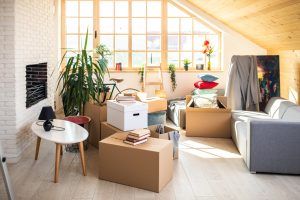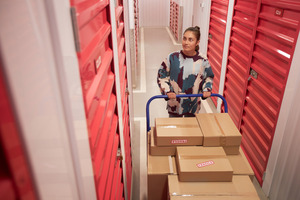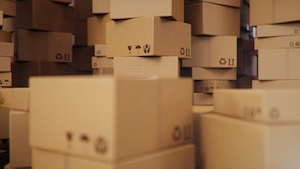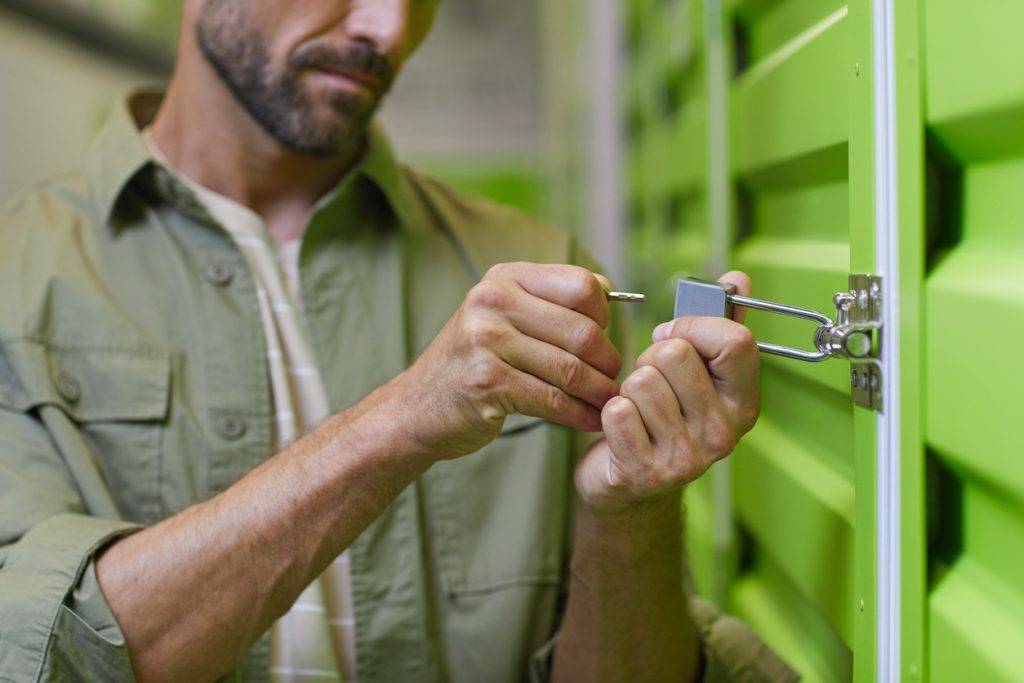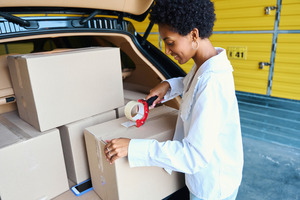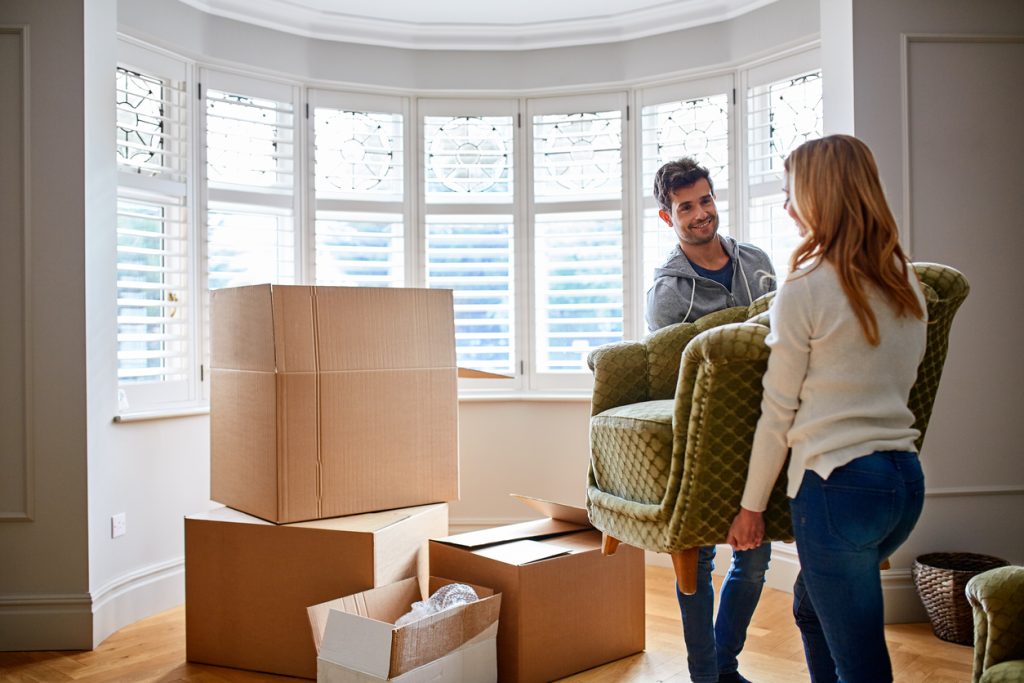In this guide, we’ll cover some key packing tips for moving your belongings into storage and keeping them safe when stored out of your home.
Self storage can give someone much needed breathing room when it comes to any major move or life event. It’s a great way of keeping your items safe and secure but out of the way until you need them.
Here, we’ve covered what you’ll need to pack your items, 30 fantastic packing tips for safe storage, whether you need a professional removals company, and what to look for in a high-quality storage provider.
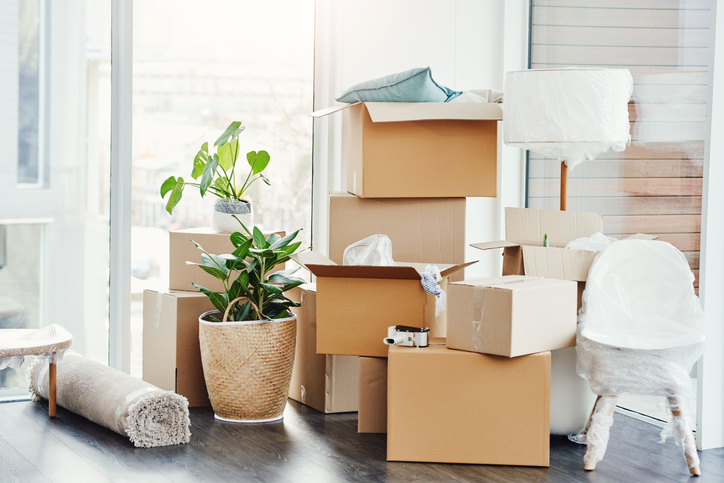
What You’ll Need to Pack Your Belongings Safely for Storage
Whether you’re planning on storing your things for just a couple of weeks or for a more long-term period, packing them safely is essential for keeping them safe, dry, and undamaged.
A few essential items you’ll need include:
- Storage Boxes: Storage boxes come in a range of sizes; depending of course on what you are storing. If you can, choose proper storage boxes (cardboard or plastic) that won’t collapse when stacked.
- Packing Tape: Keep boxes secure and taped up to avoid vermin or mould getting into your items.
- Bubble Wrap: Wrap more fragile items in bubble wrap to keep any breakables safe when being moved or stored.
- Dust Cloths: It can be a good idea to cover larger items of furniture such as tables, mirrors etc with dust clothes to keep them in good condition if stored long-term.
- Clothes Rail: If you’re storing clothes, you may prefer to store them on a clothes rail with dust jackets to prevent them from losing shape.
- Shelving: A cheap but sturdy shelving unit can be a great way to help organise your boxes and other items in your storage unit, rather than piling boxes on top of each other and hoping for the best!
30 Packing Tips for Moving Your Items Into Storage
1. Start with a Plan
Before you begin packing, create a detailed inventory of items you intend to store. This will not only help you keep track of your belongings but also assist in determining the size of the storage unit needed.
Have a look at the different types of storage unit to get an idea of what to expect.
2. Choose the Right Boxes
Invest in sturdy, high-quality boxes to protect your items – it can be tempting to use second-hand boxes to save money, but for precious items, purpose-built boxes are best!
Different sizes are essential for various items to ensure a snug fit for your more valuable and fragile items, reducing the risk of damage while in transit and stored. Take care not to overload your boxes – especially when storing heavier items such as books.
3. Label Everything
Clearly label each box with its contents and the room it belongs to. This makes unpacking and locating specific items in your storage unit much easier.
Using a QR code and scanner system can be an efficient way to label your items and quickly identify what is where at a later date.
4. Disassemble Furniture
Where possible, disassemble larger pieces of furniture to save space and avoid damage – especially if you’re planning on maximising your storage space.
You might also want to consider wrapping individual parts in bubble wrap or draping larger items of furniture in blankets for added protection, both while in transit and in long-term storage.
5. Prioritise Climate-Controlled Storage for Sensitive Items
For items sensitive to temperature or humidity, such as electronics or antiques, opt for a climate-controlled storage unit to prevent damage.
Our guide to climate-controlled storage explains what these storage units entail and in what circumstances you might want to consider them.
6. Use Vacuum Bags for Soft Items
Vacuum bags are great for compressing soft items like bedding and clothing, saving valuable space in your storage unit!
What’s more, vacuum-packing soft items is an effective way of protecting them from the risk of vermin or mould damaging the items if you’re storing them for a longer period of time.
7. Wrap Fragile Items Individually
Wrap glasses, dishes, and other fragile items individually in packing paper or bubble wrap to prevent breakage.
Ideally, you’ll wrap fragile items in bubble wrap and then store them carefully in sturdy boxes for another layer of protection. It may sound like common sense, but it’s also important to make sure you don’t bury your fragile items under heavier boxes that could collapse your boxes!
8. Utilise Original Packaging for Electronics
When available, use the original packaging for your electronic items, such as speakers, TVs, laptops, etc.
These boxes are designed specifically for safe transport and will reduce the risk of those items being damaged when stored away.
9. Avoid Plastic Bags for Long-term Storage
Plastic bags can trap moisture and cause mildew, which is why they’re generally not recommended for long-term storage, especially for fabric items.
Instead, use breathable materials for storing fabrics and clothing to preserve them – there’s nothing worse than discovering your soft items are completely unusable!
10. Store Books Flat to Protect Spines
If you’re set on packing away your books into storage, there are a few things you can do to keep them safe. Firstly, for valuable or antique books, you might want to consider a climate-controlled storage unit that is designed to preserve paper items.
Secondly, when packing your books, aim to stack books flat to avoid damaging their spines, and consider using small boxes as they can become quite heavy when loaded up.
11. Use Storage Bins for Seasonal Items
A common use of self-storage units is to store away seasonal items, such as Christmas decorations, that aren’t needed for a large portion of the year.
For seasonal decorations or clothing, clear plastic bins are ideal for easy identification and protection against pests and dust.
12. Create an Aisle in Your Storage Unit
If you have a look of items to put into storage, you could arrange your items in a way that creates an aisle. This allows for easy access to all items without having to move things around every time you want to take something out.
13. Place Heavy Boxes at the Bottom
Again, this may be a common sense recommendation, but always place heavier boxes at the bottom of stacks to prevent them from crushing lighter, more fragile items.
14. Protect Your Items from Dust
When storing items for a long period of time, it’s only natural that they’ll begin to gather dust over time.
Covering items with sheets or drop cloths is a simple but efficient way to protect them from dust and has the added benefit of adding another layer of protection from damage when moving things in and out of storage.
15. Use Silica Gel Packs to Combat Moisture
Moisture is your biggest enemy when it comes to storing items for a long time, especially fabrics and clothing.
Include silica gel packs in your boxes to absorb any excess moisture and protect your belongings from dampness.
16. Do Not Overpack Boxes
It can be tempting to try to use as few boxes as possible to save on space and the amount of time it takes you to move your items into storage, but wherever possible, avoid overpacking boxes!
This can easily lead to damage when lifting or if the box breaks under excessive weight.
17. Keep Frequently Used Items at the Front
You may be putting things away that you don’t intend on using for the foreseeable future – but if you’re putting items into storage while moving house, for example, there may be some things you need sooner than others.
Store items you anticipate needing more frequently at the front of your storage unit for easy access.
18. Use Specialty Boxes for Delicate Items
For particularly delicate items, such as mirrors or artwork, use specialty boxes that offer extra protection.
19. Consider Shelving for Organisation
Installing shelving in your storage unit can help keep things organised and easily accessible.
You can get storage shelves that you build yourself for a relatively cheap price on Amazon which can be a much more efficient way of organising your unit than simply stacking boxes on top of each other and hoping for the best!
20. Make Sure You’re Covered
Self-storage insurance is mandatory in most UK storage facilities, but you should know that many customers end up paying far more than necessary for in-house storage insurance versus buying your own insurance from a third party.
What’s more, you need to make sure that your policy actually covers the value of the items you have stored in your unit. Find out more about self-storage insurance and getting a fair quote.
21. Use a Detailed Labelling System
We’ve already mentioned labelling everything, but you could go one step further and introduce a labelling system that helps you to identify where items are far more efficiently.
Use a master list that corresponds to numbers, QR codes, or colours on the boxes and organise your boxes into categories (camping gear, kitchen goods, etc) for easier identification.
22. Avoid Storing Perishables or Hazardous Materials
There are some things that you should never put in your storage unit. Not only does it put your storage unit (and therefore, your belongings) at risk – you all risk invalidating your storage contract and storage insurance.
This guide details some of the key things to never put in your storage unit – including perishables, flammable items, and hazardous materials as well as a few things you might not expect!
23. Utilise Drawer Space
If you’re storing large items such as a dressing table, cabinet, or desk, use the drawer space to store small items, maximising your storage space.
24. Drain fuel from gardening equipment
Fuel is one thing you should never put in your storage unit, so make sure you’ve thoroughly drained anything that has it – such as garden equipment – before placing these items into storage.
Likewise, if you have items with other types of liquids in them, it’s best to remove these to keep your goods secure and avoid leakages.
25. Keep Your Unit Ventilated
Leave some space around the perimeter of your unit for air circulation and to prevent moisture buildup.
26. Wrap Upholstered Furniture
When storing things such as sofas and chairs that are upholstered, cover them in plastic wrap to protect them from dust and moisture. Again, this has the added benefit of protecting them from damage when moving your boxes in and out of your unit.
27. Photograph Your Items
While having an inventory list of what you have put into storage can be useful, it’s always a great idea to take photographs of your items before storage.
This can be helpful for insurance purposes and also to remember what you have stored!
28. Use Nesting to Save Space
Nest smaller items inside larger ones, like pots and bowls, to maximise space efficiency. This can also apply to hats, suitcases, bags, and other items that it makes sense to nest items inside.
29. Elevate Items Off The Floor
This might be unnecessary in secure storage units, but you could consider elevating your belongings off the floor on pallets to protect against flooding or spills.
If you are using cardboard boxes, keeping them off the floor is an effective way to ensure damp does not get into the boxes and destroy what’s stored inside.
30. Regularly Check Your Storage Unit
Finally, once you’ve got everything packed up and into storage, try not to completely forget about it!
Regularly visit your storage unit to check on the condition of your items and ensure everything remains in order.
Do You Need A Professional Packing Company For Putting Items Into Storage?
There are a number of companies that offer professional packing services for putting your items into storage. Often, these companies double as a removals service for moving home, but others offer a standalone service to guarantee your items are packed safely, efficiently, and stored in the most optimal conditions.
While this can be a great way to save time and ensure your belongings are packed and stored correctly, it’s up to you whether this is a cost worth spending.
How to Choose a Secure Storage Facility
There are numerous storage facilities around, some better than others. Finding the best self-storage solution for your personal requirements can be surprisingly difficult as there is so much to take into consideration.
Whatever storage facility you decide to use make sure that you find one that ticks all the boxes when it comes to your requirements:
- Always make sure you know their opening hours. Some storage facilities are not manned or accessible 24 hours a day.
- Ensure your chosen storage facility has adequate security and CCTV and always make sure they have relevant and adequate insurance in place to cover the cost of your stored items just in case the inevitable happens and your possessions get damaged or stolen.
- Make sure you have the correct storage insurance to cover the replacement value of your items should they be damaged, stolen, or lost due to an unforeseen incident.
Protecting Your Stored Items
Storage insurance is vital for ensuring your items are covered should something happen to them in storage. You can opt for the most secure storage unit in your area, but incidents such as fires, flooding, or theft can still have devastating consequences on the items in your unit.
Storage insurance ensures that should the worst happen, the financial value of those items is protected and can be replaced.
Surewise self-storage insurance is up to three times cheaper than most insurance policies offered directly by self-storage units, and can be tailored to ensure that you’re paying to cover the exact value of your items stored away – no more and no less.

